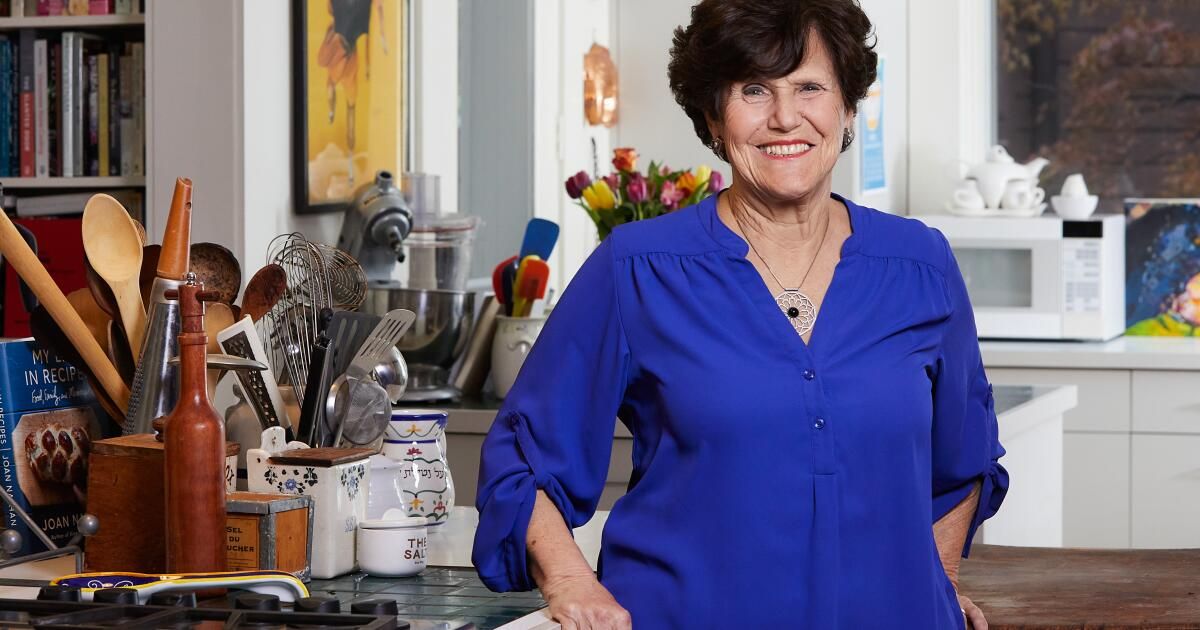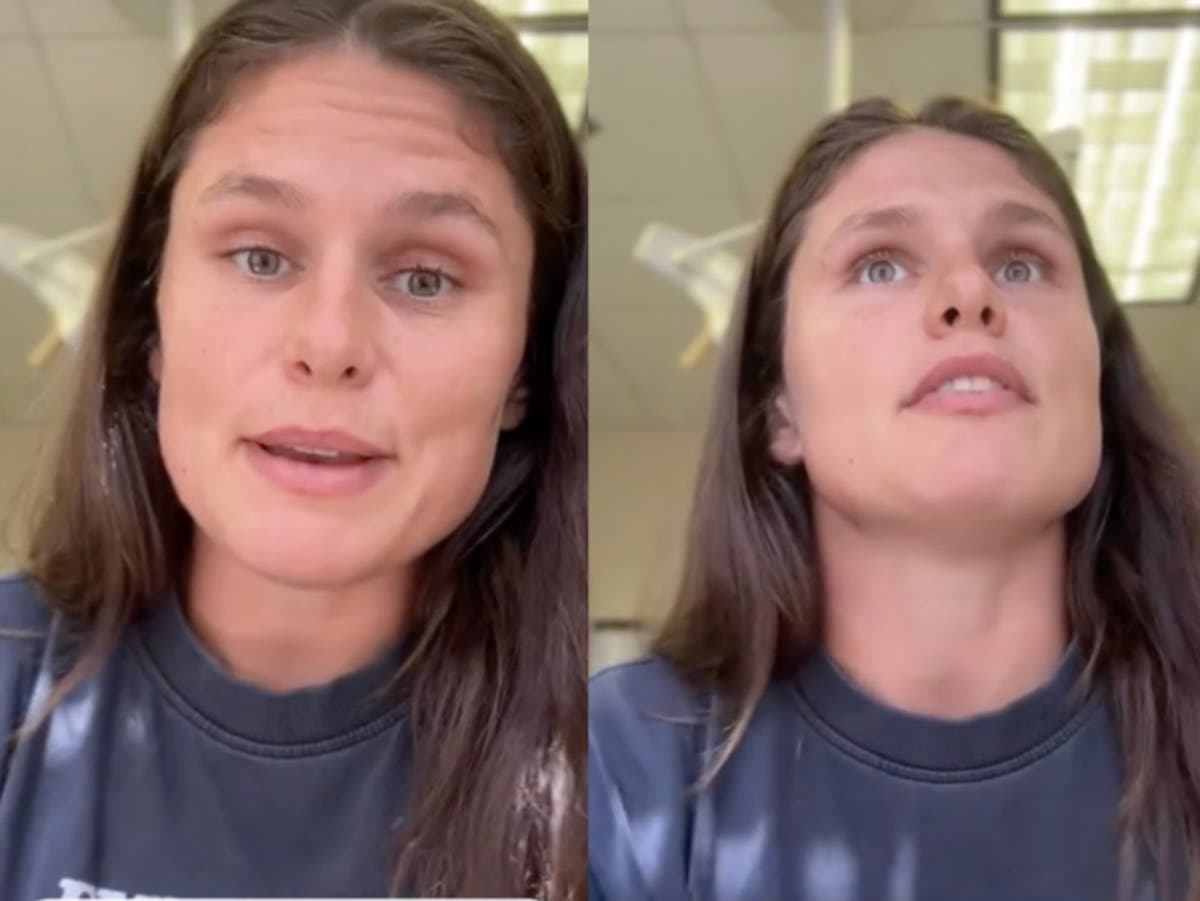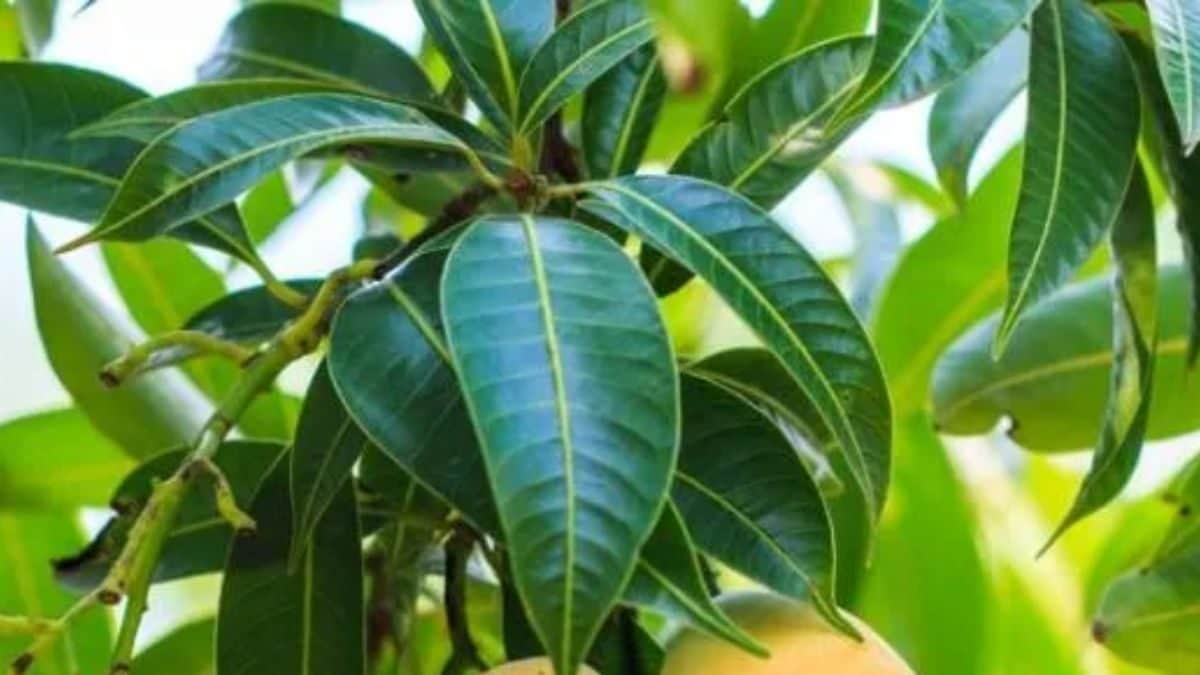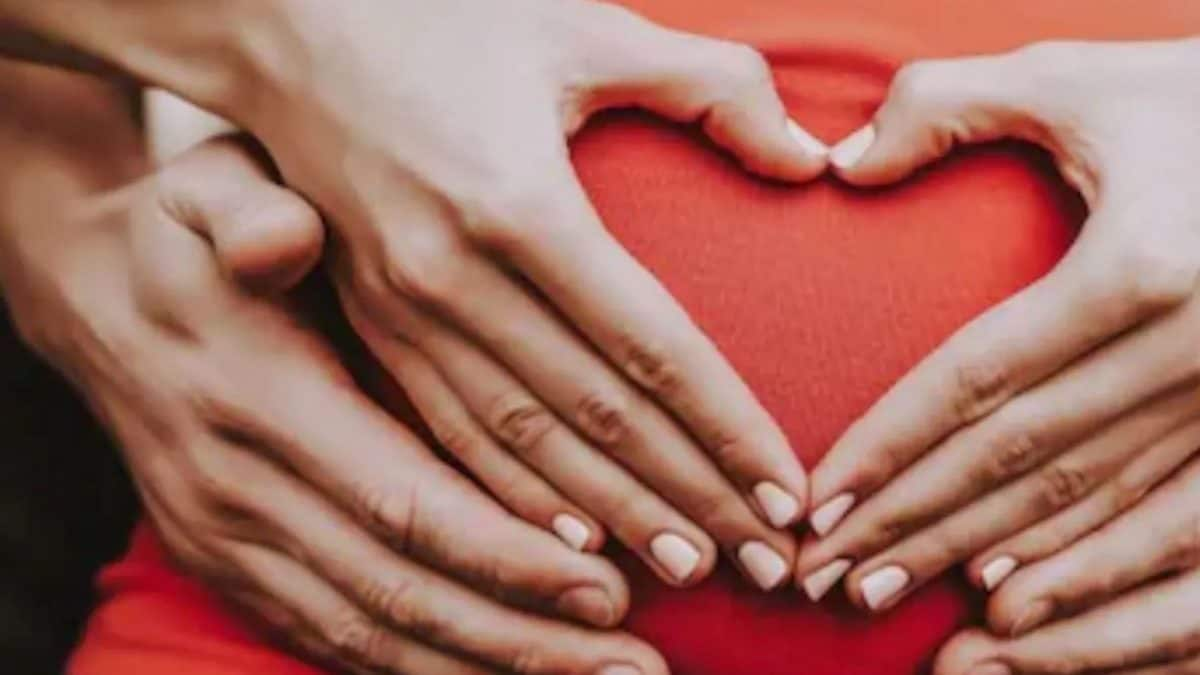The morning after Joan Nathan's 80th birthday party last year, a long-table gathering in Palm Springs on the grounds of a hacienda-style compound where Samuel Goldwyn, Lucille Ball and Judy Garland are said to have lived at various times, Guests of the evening celebration were invited to lunch at the mid-century showcase Abernathy House.
Partygoers who had come from Denmark, Germany and cities across the United States poured coffee and enjoyed the glamorous poolside setting after celebrating Nathan the night before with testimonials and a dinner prepared with the help of his family , friends and colleagues. Roasted Cabbage with Sour and Spicy Agave Nectar from Chef Amy Brandwein of DC's Centrolina; Lulu chef David Tanis' citrus, olive and fennel salad; lamb shipped from Philadelphia by Zahav chef Michael Solomonov; a new variety of Tehachapi Heritage Grain Project rice from Glenn Roberts of Anson Mills; Sherry Yard's spectacular birthday cake with passion fruit curd, plus many other dishes. The toasts and dancing continued well into the night.
Now, with the arrival of morning from the California desert, Nathan entered, bright-eyed and carrying candy. Surrounded by the aroma of cinnamon, sugar and roasted nuts, the author of “Jewish Cooking in America” set down trays of schnecken she had prepared herself and watched with satisfaction as the group descended on the sticky nut rolls still warm after eating. have been reheated in the oven.
This is a woman who almost never arrives empty-handed. Even at her own birthday brunch.
1
2
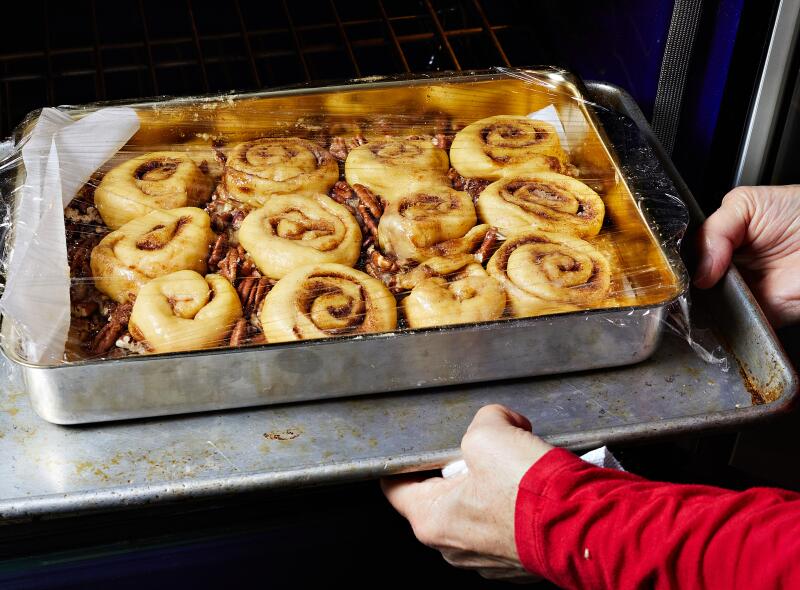
3

1. Spicy Walnut Rolls: Joan Nathan, in her kitchen, flips a batch of Ann Arbor schnecken after baking to serve with the nuts on top. 2. After the dough has fermented, the schnecken are placed face up on the nuts and then baked. 3. Hot and ready to eat. (Deb Lindsey / for The Times)
And, of course, their schnecken (“snails” in German) come with a story or three. Schnecken's recipes have appeared in some of Nathan's 12 cookbooks, sometimes tracing the historical evolution of the rolled treat and other times describing the bakers who shared her recipes or inspired their own recipes.
But Nathan's latest schnecken cookbook focuses for the first time entirely on her own story, from curious schoolgirl to the world's most prominent expert on Jewish food.
Of course, like any Joan Nathan book, “My Life in Recipes” is filled with stories about other people's lives.
Like Zelig in her ability to observe notable people and events in the worlds of food and politics, but herself no ordinary even as she gently but persistently coaxes secret family recipes from home cooks around the world, Nathan's life reflects the increasingly broad tastes of the American palate.
Note that while living in New York and working for the Mayor's Office of Midtown Planning and Development during the Abraham Beame administration, Nathan was one of the driving forces behind the 1974 founding of the City's International Food Festival. Ninth Avenue, which is still going, possibly New York. York's first public gathering for such a multiplicity of culinary cultures. At that time it was said that there were 22 different kitchens in the shops along the avenue. A who's who of food world figures was involved in the inaugural event, including Madhur Jaffrey, Edna Lewis and Diana Kennedy, who, as Nathan writes in “My Life,” “stood outside Alps Drugstore demonstrating guacamole.” .
Although the title of Nathan's first cookbook, “A Taste of Jerusalem” (written with Judy Stacey Goldman), might lead some to think that it was a book dedicated solely to Jewish recipes, the subtitle: “International Recipes from the many kitchens of Holy Scripture.” City” – reveals his lifelong search for what unites many disparate cultures.
His 2005 book, “The New American Cooking,” examined how immigrants improved our tastes. In “King Solomon’s Table” (2017), she explored the food of the Jewish diaspora, including Salvadoran latkes and Brazilian-Belarusian halibut. And his definitive 1994 book, “Jewish Cooking in America,” which also became a PBS series, not only told stories about cholents, kugels and latkes, but also about Cajun, Moroccan, Syrian and other influences. countries on the Jewish table.
It could be a powerful mix of his mother's desire to “embrace the new,” as Nathan describes New York-born Pearl Gluck, and his father Ernest's connection to “the Old World he left behind” when he came to the United States. United in 1929. early enough to get many, but not all, of his family members out of Germany before the killing of Jews in the concentration camps began. However, despite all his ties to Germany, Nathan's father loved to eat out at the Chinese and Italian restaurants in Providence, where the family spent many years. All of which is to say that Nathan's work radiates respect for tradition, leading Jews of very different political persuasions and culinary abilities to rely on it when they need Christmas recipes, as well as an openness and even enthusiasm to learn and experiment.” the new”.
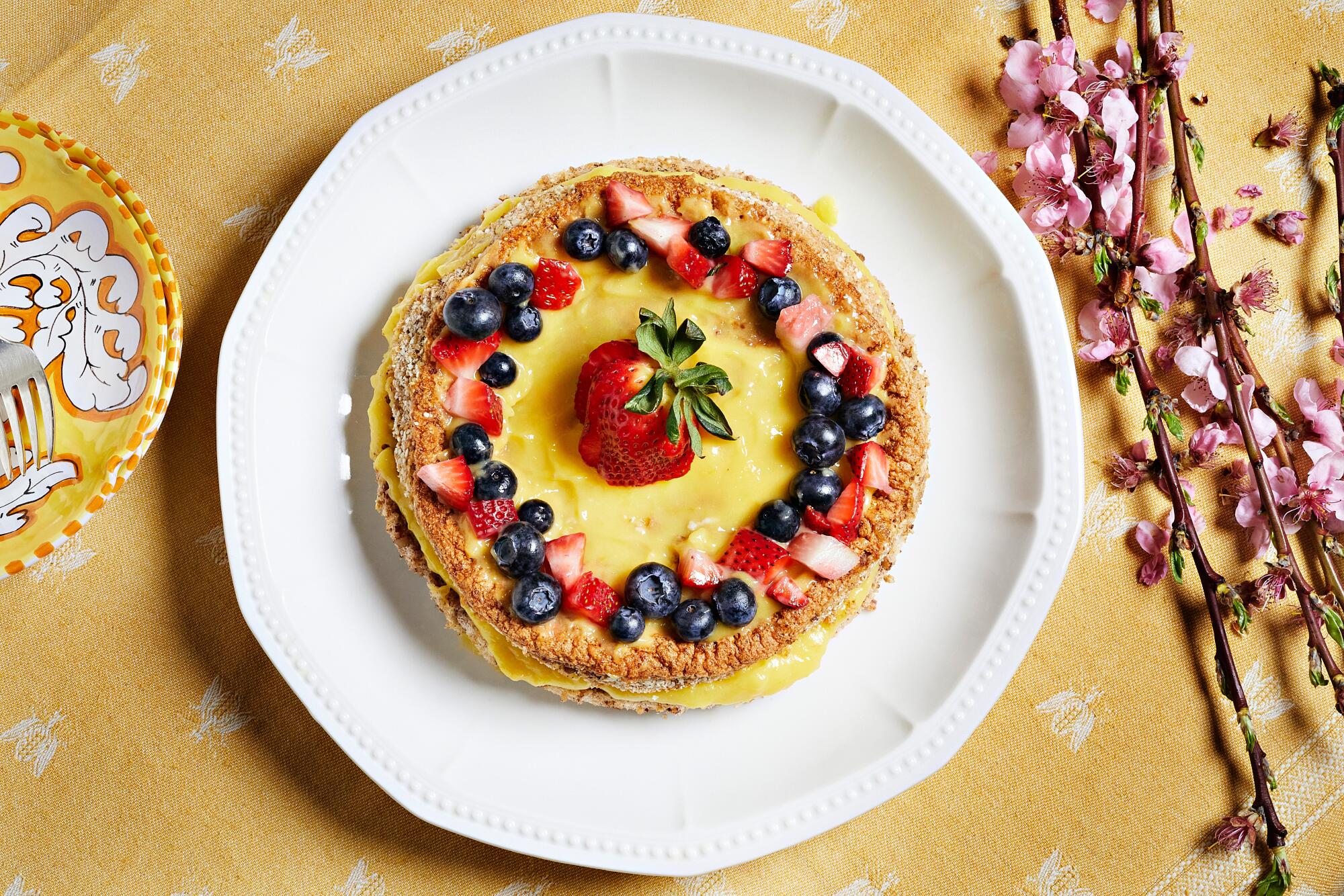
One of Joan Nathan’s Christmas recipes from “My Life”: Lemon Pesach Nut Cake with Lemon Curd Filling. The cake is made with matzo flour.
(Deb Lindsey / for The Times)
This could be why, after studying in France and Italy and then working in New York at the Mission of the Malagasy Republic (now Madagascar) to the United Nations, she was drawn to Israel and found herself working for the mayor from Jerusalem, Teddy Kollek, a complicated politician known for his defense of Palestinian-Israeli coexistence. Thanks to her work as a foreign press attaché, she acquired a Rolodex of contacts and met several dignitaries. Among them, Barbra Streisand and human rights activist Elie Wiesel, who, as she writes in “My Life,” asked her what she did “to protect herself from depression.” She told him that she usually tried to find a new ride around town. “When I asked her the same question, she replied, 'It's not that easy with me.'”
Her time working for Kollek is what propelled Nathan on her path as a cookbook writer, intent on finding the human connections with the recipes she published.
“I saw how food, and not just food, but eating together, eating at someone's table, no matter who it is, is a way of saying: I like your food. I like you,” she says over the phone. “People relax a lot more. I learned that from Teddy Kollek. He was able to break many barriers by eating with people.”
One of the best stories Nathan tells in “My Life in Recipes” centers on a lunch she and Kollek shared with the leader of an Arab village between Jerusalem and Bethlehem. After “Turkish coffee with whole cardamom pods,” Kollek broke the news that Jerusalem would not pay for the paved road the people wanted because it was too expensive.
Then came the mezze: Bedouin cheese, hummus “drizzled with village olive oil,” baba ghanouj, kubbeh, “pita fresh out of the oven,” and arak. The leader again asked for his way. Kollek said no again.
“Undaunted, the mukhtar nodded again and the main course came out…one of the great Palestinian dishes from the city of Nablus,” Nathan writes.
It was mousakhan, chicken “roasted with cumin, cinnamon and pine nuts, with tons of sautéed onions colored pink by the sumac…served on a large pita bread soaked in olive oil while warming in the oven.”
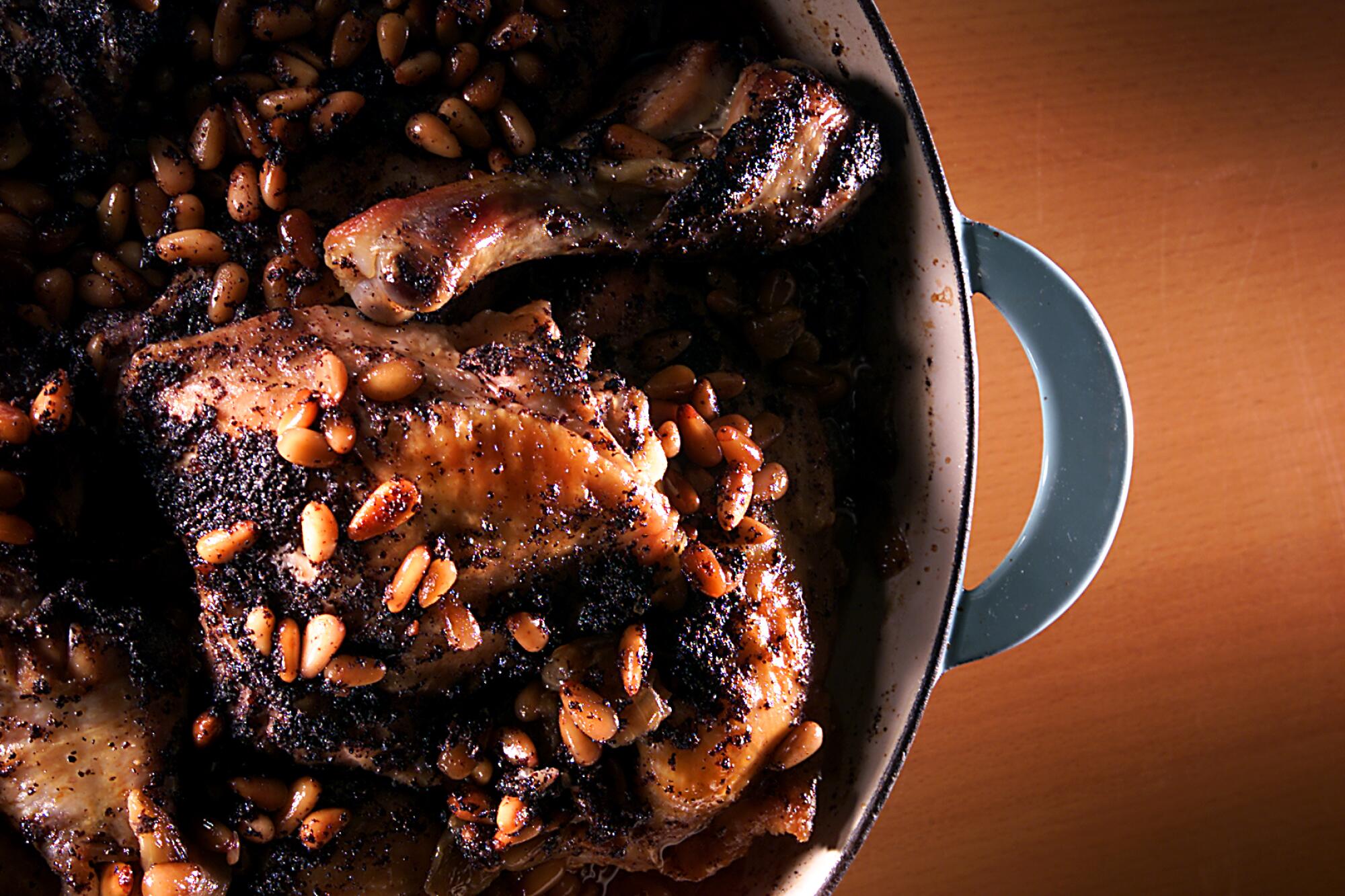
Joan Nathan's recipe for Palestinian mousakhan.
(Robert Gauthier / Los Angeles Times)
“While we were eating, something extraordinary happened: we forgot to feel uncomfortable. … By the time we had eaten our fill of chicken and were drinking our mint tea, everyone had gotten what they wanted.”
The mayor enjoyed “one of the best meals of his life.” The people found their way. “What about me? Well, I have a career for life. I also bought my favorite chicken dish.”
All these years later, of course, with ceasefire talks between Israel and Hamas failing, civilian killings continuing to mount in Gaza, and Israeli hostages still being held, such a meal is hard to imagine today.
“Back then people talked to each other,” Nathan says.
In 2001, just after the publication of his book, “Israel Foods Today,” Nathan wrote a story for this newspaper in which he said: “I have visited Israeli Jewish home cooks of Moroccan, Libyan and Iraqi origin. …I have sat on the floor in Druze, Syrian Alawite and Kurdish kitchens, shaping kibbeh. …I have visited Palestinian villages where I have tasted sun-kissed figs plucked straight from the trees and Israeli Arab villages where celebratory pancakes are baked in a tabun oven buried in the earth and served filled with candied sesame seeds. … Unfortunately, today I could not have had those first experiences. “There is too much turmoil in the country that destroys human relationships.”
Yet his dream, “that Jews and Arabs might share the wealth of this land they both claim,” he wrote then, was still strong.
Now, he says on the phone: “It's much worse. I think the fear on both sides is too much. There are many friendships between Jews and Arabs that no longer exist. “It’s just a sad moment in our history.”
I ask Nathan if he still believes that food can bring people together.
“Well, I guess sitting can do it,” he says. “A week before October 7, a friend invited me [to dinner with] a Palestinian family and we talked about things. It was incredible. After that dinner, my wife and I went for a walk. But after what happened on October 7, I just couldn't call her. Then her husband approached her and told her that he had been working with a Jewish-Arab choir. All this time, this choir had been practicing in Jerusalem and now they were coming to the United States. You know, all she wanted was for people to come to the concert. And I thought, what a wonderful thing it is to help support. …How can you not break down barriers if you talk to people?”
The recipes
Time 9 to 36 hours (30 minutes active time)
Yields Makes 12 sticky buns
Time 1 hour 45 minutes
Yields Serves 8
Find Joan Nathan in the Los Angeles Times book festival on Saturday, April 20 at 4 pm at USC's Ray Stark Family Theater, where he will discuss food memories with Rosa Jackson and Klancy Miller.

